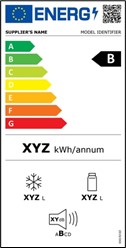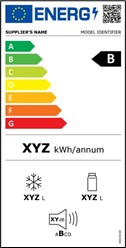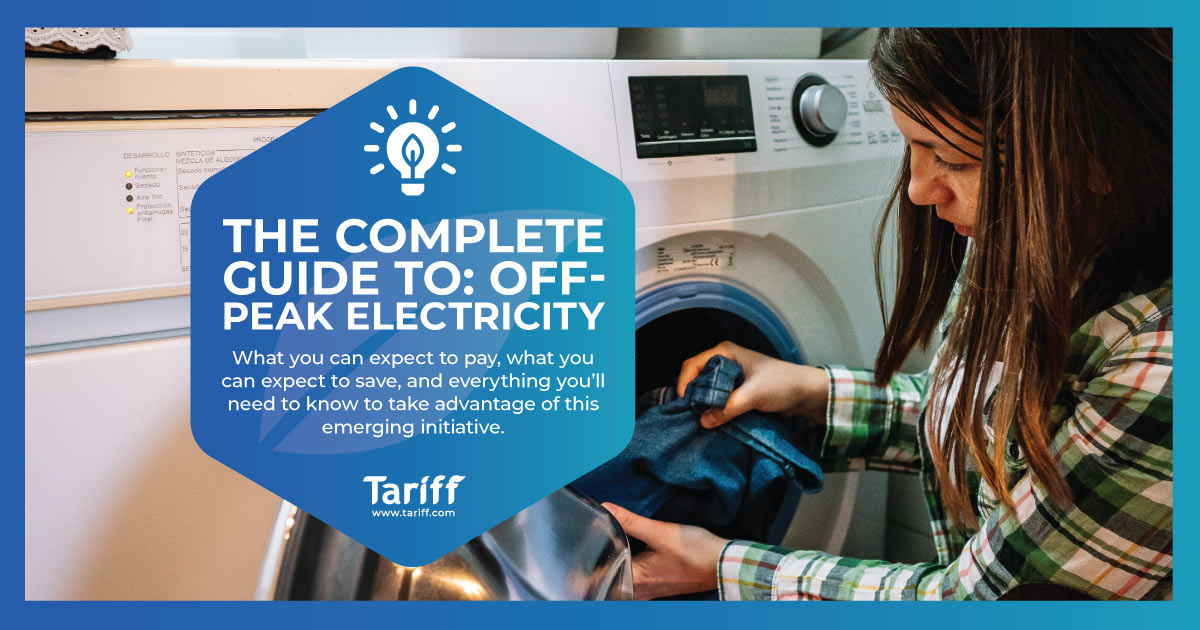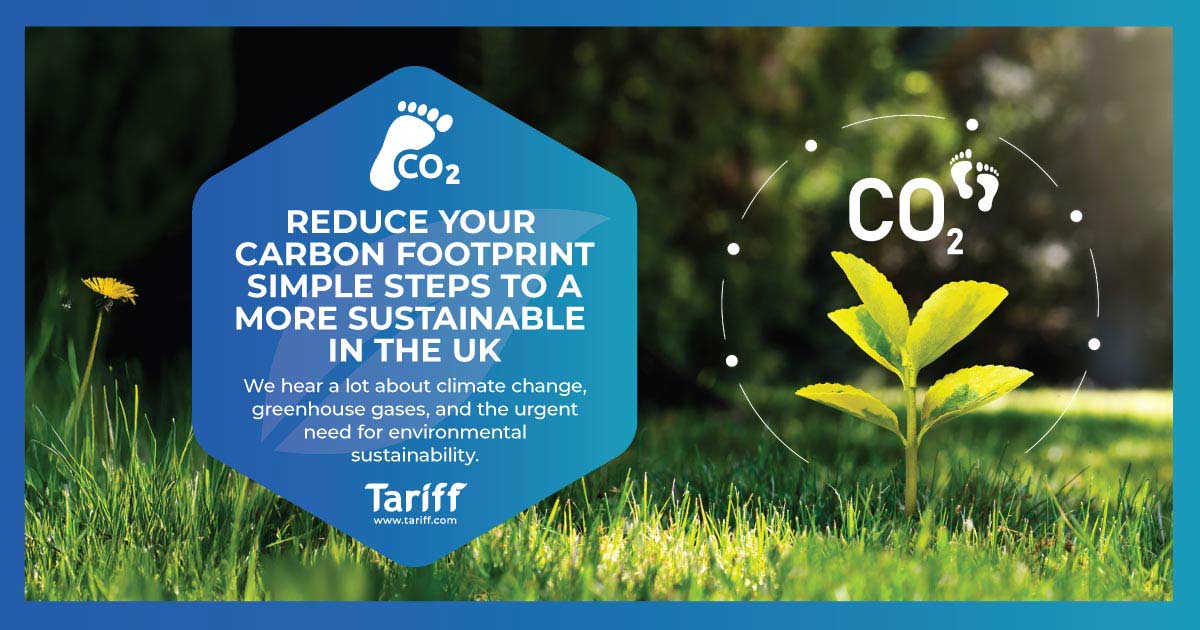Is My Gas Boiler Efficient? Key Advice For The Winter
Winter is often an expensive time for us all. Whether that’s the pressure of purchasing presents, feeding the family, or simply heating your home or business during a cold snap, there’s a certain cost that’s associated with the colder months.
That’s especially noticeable if your method of heating isn’t as efficient or effective as it could be. An inefficient or ineffective boiler can mean the difference between a warm and welcoming environment, and a chilly reception for both you and your finances.
That’s where our energy experts here at Tariff can help. With a wealth of knowledge on everything from active power to the Warm Home Discount scheme, we’re ideally equipped to keep you informed on what you need to know, and how to make the right decisions when it comes to your energy.
With our latest article, we’ll discuss how you can discover more about your boiler’s efficiency rating, what that means as we face colder weather on the horizon, and what you can do to ensure you stay warm this winter.
What You Need To Know About Modern Gas Boiler Effectiveness
A key point to note before you begin looking into how efficient your gas boiler is that any gas boiler installed after 2007 will always have an energy efficiency rating of A (above 90% efficiency). We’ll discuss those ratings more in-depth shortly, but it’s important to keep that in mind as we go through our guidance.
This is down to legislation introduced in 2007 by the UK government, which set out new standards that gas boiler manufacturers have to comply with by law. This stipulates that any boiler made after 2007 must be what’s called a “condensing boiler”, meaning it utilises and deploys energy much more efficiently than older models.
These newer models will use specialist condensing technology that allows them to make more effective usage of the heat they generate, and ultimately be more efficient in how they you and your property.
They run at a lower temperature but at a more consistent rate, generating hot water at 65°C as opposed to the 80°C that older gas boilers require. This means they’re able to operate more efficiently, and maintaining that “condensing mode” for a longer and more energy-efficient period of time.
Of course, not all boilers are the same, and there’s still thousands of boilers across the UK that were either installed before that date, or that haven’t got the same levels of efficiency you’d expect. We’ll break down how you can better establish your boiler’s efficiency, regardless of when it was installed.
How Do You Find Out Your Gas Boiler’s Efficiency?
While it might seem a daunting task at first, there’s actually a simple way to see how efficient your gas boiler is. Most modern gas boilers will have an ERP (Energy-Related Product) sticker on them, either on the outer shell of the boiler itself, or on the packaging.
Newer-build properties that came with pre-installed gas boilers – while few and far between as the energy market changes – may also have their sticker on the housing (such as in a cupboard or cabinet), or on documentation that comes with the boiler when you first move in.
This sticker is standardised across all appliances and technology, and so the vast majority of boilers will have something that looks like this:

The efficiency of your boiler is represented by a letter, on a scale where A is the most efficient it can be, and G is the lowest grade of efficiency. Those letter grades (similar to the old method of GCSE exam grading) correspond to percentages.
Here’s a brief guide to how those letter grades stack up, and convert to a percentage of efficiency:
- An A-rated boiler is more than 90% efficient
- A B-rated boiler is between 86% and 90% efficient
- A C-rated boiler is between 82% and 86% efficient
- A D-rated boiler is between 78% and 82% efficient
- An E-rated boiler is between 74% and 78% efficient
- An F-rated boiler is between 70% and 74% efficient
- A G-rated boiler is below 70% efficient
But what does that percentage mean when it comes to effectively heating your home or business? Let’s look at them in more depth, with a few examples so you can make the best decision when it comes to your energy needs.
What To Do If Your Gas Boiler Doesn’t Have A Sticker
Don’t despair if you can’t find a sticker – there are other methods you can use to find out how efficient your gas boiler is. There are more steps to these than simply checking a sticker, but they’re still simple and quick enough.
If you’re able to, find your boiler’s make and model number. These are usually found on a smaller sticker or plate where the pipes lead out from your boiler’s main body, next to the dials you’ll use to adjust key things like temperature and timings.
If your boiler is in a self-contained unit, or you’re unable to access it for any reason, you can also consult the documentation or guidance that came with your boiler to find out the information you need.
You’ll then use the name of your boiler, along with its model number or identification to find out its efficiency levels by inputting them on the PCDB, or the Product Characteristics Database. This will show you comprehensive details about your gas boiler, including its energy efficiency as a percentage.
What Do Gas Boiler Efficiency Ratings Mean?
While it’s great to have the ratings for boiler efficiency condensed to an easy-to-follow grading system, it does mean that we don’t get quite as much information on the surface. Those percentages only go so far in explaining what our boiler’s level of efficiency means.
However, there is a simple way to understand how those percentage figures factor into how effective your boiler is, and what it might mean going forward. Let’s use the example sticker from earlier:

This is a B-rated boiler, meaning that (if we use the figures we discussed earlier) it’s got an efficiency level that falls between 86% and 90%. That percentage tells us two different things – the energy it uses to heat your home or business, and the energy that it uses to power its own operations.
For instance, if our example boiler is 90% efficient, it means that 90% of the power it produces goes towards heating your premises, and the remaining 10% is the power it needs to keep itself operating. As we touched on earlier, all modern (post-2007) boilers have A-rating, meaning they’re at least 90% efficient.
If your boiler is older, or was installed before that 2007 legislature changes, you’ll need to determine its grading and efficiency percentage by checking the sticker, or using the PCDB. Age can also play a factor, so while that information will represent what it started at, it’s not always any indicator of what it currently is.
Even with more modern condensing gas boilers, the older it is, the more prone it can be to inefficiency or slower operations. Estimates say that a boiler that’s over 25 years old only operates at around 60% – 65% efficiency, with newer boilers retaining more of that effectiveness.
There is advice you can put into place, however, to ensure you get the most out of your boiler no matter its age.
Maximising Your Gas Boiler’s Efficiency: 5 Key Tips
We’ve compiled 5 crucial tips for ensuring that your gas boiler isn’t just efficient now, but that it stays that way with colder days and months always on the horizon.
1. Consider A Boiler Upgrade
While a good proportion of properties will have had their boiler upgraded since the advent of condensation boilers in 2007, there are still many more properties that have an older or less efficient gas boiler.
That’s particular true for older premises and homes that were built long before those updated regulations. In fact, many companies advise checking your boiler shortly after you move into a new area in order to determine whether or not you need to replace it, or simply to get it serviced.
Switching to a new gas boiler is naturally going to be an expensive outlay at first, but it’s important to remember that it’s a long-term investment. Think of it this way – older boilers, as we’ve just discussed, are much less efficient than newer gas boilers, with those that are 25+ years old operating at less than 70% of their usual capacity.
That essentially means that they’re using over 30% of their power to stay in operation, with a maximum of just 70% going towards heating your home or business. The older your boiler is, the less efficient it becomes, meaning that a replacement is always on the cards as your gas boiler depreciates.
That leads to higher costs, especially over the winter months where you’re more likely to need heat. According to the Energy Saving Trust, heating your home with a G-rated (less than 70% efficiency) boiler costs an average of £168 more per year than a D-rated (between 78% and 82% efficiency) boiler.
In fact, using that same Energy Saving Trust data, we can see just how much difference a new, A-rated (more than 90% efficiency) makes when compared with a lower-rated boiler, with a colossal £580 saving when heating a larger, detached home. There’s similar savings across all property types , too, with businesses reportedly seeing even larger savings over the course of the year.
Of course, a more efficient (C-rated or above) boiler would see a greater reduction in those average costs, and ultimately bigger savings down the line. There’s also a sizeable benefit for the environment, too, with more efficient boilers wasting less energy, and more effectively using the energy they do consume.
2. Invest In Smart Controls & Technology
As we progress towards a more technologically-advanced world, there’s few places that’s more apparent than in how we consume and monitor our energy usage. For good reason, of course – we’re fast approaching a critical point in our global energy consumption, and better and more sustainable tools are an ideal step in the right direction.
That’s especially true for the technology that allows us more control over how we heat our homes and businesses. Smart meters, automated controls and more robust monitoring all contribute towards a more interactive and comprehensive way to view the energy you consume.
Of course, while they offer better ways to understand where your energy is being expended, they’re also a great way to boost your boiler’s efficiency. They can be used to set specific times where you need a surge in your hot water consumptions (such as for morning showers), or when you’re not going to be using it.
You might also choose to invest in what are called “compensation controls”, which are advanced monitoring techniques that take into considerations outside temperatures and weather conditions to provide heat when you need it most. These are among some of the more rigorous tools for ensuring boiler efficiency.
You’ll be able to use the information your smart meter displays to make more impactful decisions for the future, such as deciding whether an upgrade is necessary, or when you need to look at further optimisations for your gas boiler.
3. Consider The Size Of Your Boiler
There’s obvious draws to having a larger or more robust boiler. More heat in the winter, faster warm-up speeds and a larger network of piping all offer reasons to consider a more extensive heating system for your property.
However, too large a heating system leads to unnecessary and often astronomical costs, as well as a poor energy efficiency rating for your home or business. For instance, an average 3 bedroom home in the UK – with between and 10 and 15 radiators – will only need between 28 and 34 Kilowatts of power from their boiler.
Of course, larger homes and businesses will need larger heating facilities. A large office (around 10,000 square feet) is estimated to need a heating output of 146.5 Kilowatts, meaning you’re more likely to need a boiler that’s substantially larger and more powerful than those fitted in domestic properties.
Similarly, smaller or single-floor properties (such as flats or bungalows) with less than 10 radiators will naturally require a smaller system – estimated to be between 24 and 27 Kilowatts of power. It’s best to understand your building size and the heating needs before you choose a boiler for installation.
4. Regularly Bleed Your Radiators
While not the most appealing of chores, bleeding your radiators is hugely important in improving and maintaining the effectiveness of your heating system. A radiator that’s cold at the top and hot at the bottom when your boiler’s active is a clear sign a radiator bleed is necessary.
The air bubbles and water residue that can get caught in a radiator when its not been bled (or bled properly) means you lose a significant amount of your heating’s effectiveness, and ultimately end up spending more to heat your home or business.
Bleeding your radiators, although an onerous task at the best of times, isn’t too time consuming, and the benefits far outweigh the time you’ll potentially spend doing it. You’ll then just need to check the pressure dials on your boiler panel to ensure its properly repressurised.
Most of the time, your heating system will return to full working order, and you’ll be able to enjoy a warm home or business premises. If that doesn’t happen, it’s a simple matter of using the valve near your pressure gauge to increase the pressure to the levels it should be at (usually between 1 and 1.5 bar).
5. Strengthen Your Insulation
It’s perhaps one of the most common tips for keeping your home warm in the winter, but insulation plays an absolutely pivotal role in ensuring the efficacy and efficiency of your gas boiler. There’s multiple ways to approach that.
The chief among these is the special insulator foam you’ll find around key pipework and areas where heat passes through (such as in side the boiler housing itself). This helps keep more heat inside pipes – which can often be cold – and mean that a greater amount of the heat that your boiler produces goes through to your radiators and out into the room or area of your property.
Similarly, insulation at crucial points of heat loss in your property (such as in the attic, around windows and doors, or on extractor fans or outdoor pipework) can mean you’re haemorrhaging less of the heat you’re paying for.
There’s also alternatives that offer “quick fixes” or supplementary ways to insulate your home. This includes sealant around any gaps or cracks in windows, draught excluders under doors and in porches, and double or triple glazing.




